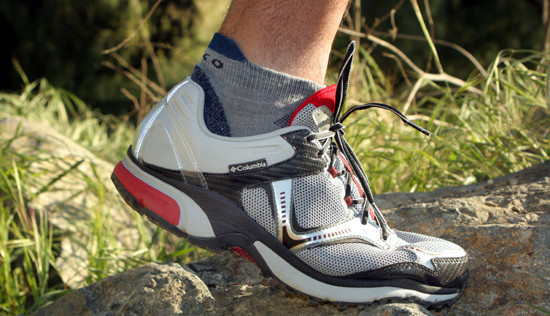Converting Footsteps Into Electricity
September 06, 2011
on
on

Researchers are developing a new technique to convert mechanical energy into electricity. In the future walking around could produce enough energy to charge our portable devices.
Electrical devices have been liberated from the wall socket. Battery powered computers, phones and music devices come along everywhere we go. The limiting factor is electricity. In the end the battery always goes dead. Ironically, when we move around with our portable devices we produce a lot of energy. But a lot of this energy is lost as heat. If that mechanical energy could be converted into electricity. Our very mobility could charge our mobile devices.
Researchers Tom Krupenkin and Ashley Taylor of the University of Wisconsin-Madison are developing a new method called reverse electrowetting to generate electricity from footsteps.
In classical electrowetting a conductive liquid spreads on a dielectric surface. When voltage from an external source is applied the surface tension between the liquid and the solid surface is modified. This changes the degree with which the liquid can maintain contact with the surface (wettability). So when a surface has a low degree of wettability the liquid hardly makes contact with the surface. Applying a voltage increases wettability and causes the liquid to spread over the surface. The motion of the liquid is a form of mechanical energy.
Krupenkin and Taylor reversed electrowetting. Instead of converting electrical energy into mechanical energy, they are applying motion to produce electricity.
This works as follows: droplets of liquid are placed between electrodes coated in dielectric film. Both droplets and electrodes are connected to an external electrical circuit. External movement causes the interface between the droplets and the electrodes to decrease. This releases an electrical charge which flows back into the electrical circuit, generating an electrical current.
To convert footsteps into electricity the researchers propose using ‘footwear embedded harvesters’. A tube of a millimeter wide and four meters long would contain the electrodes and droplets. In total the device would take up 40 cm2 which can be incorporated in the sole of the shoe. Each foot would generate up to 10 W. Enough to charge a phone or a laptop.
These shoes aren’t on the market yet. Krupenkin told Technology Review that it will take at least another two years of development and an adventurous shoe maker to team up with the researchers before our inability to sit still will actually start to pay off.
You can download the article Reverse electrowetting as a new approach to high-power energy harvesting. By Tom Krupenkin and Ashley Taylor, first published in Nature Communications 2, Article number: 448.
Source: Technology Review
Photo: freshairjunkie.com
Electrical devices have been liberated from the wall socket. Battery powered computers, phones and music devices come along everywhere we go. The limiting factor is electricity. In the end the battery always goes dead. Ironically, when we move around with our portable devices we produce a lot of energy. But a lot of this energy is lost as heat. If that mechanical energy could be converted into electricity. Our very mobility could charge our mobile devices.
Researchers Tom Krupenkin and Ashley Taylor of the University of Wisconsin-Madison are developing a new method called reverse electrowetting to generate electricity from footsteps.
In classical electrowetting a conductive liquid spreads on a dielectric surface. When voltage from an external source is applied the surface tension between the liquid and the solid surface is modified. This changes the degree with which the liquid can maintain contact with the surface (wettability). So when a surface has a low degree of wettability the liquid hardly makes contact with the surface. Applying a voltage increases wettability and causes the liquid to spread over the surface. The motion of the liquid is a form of mechanical energy.
Krupenkin and Taylor reversed electrowetting. Instead of converting electrical energy into mechanical energy, they are applying motion to produce electricity.
This works as follows: droplets of liquid are placed between electrodes coated in dielectric film. Both droplets and electrodes are connected to an external electrical circuit. External movement causes the interface between the droplets and the electrodes to decrease. This releases an electrical charge which flows back into the electrical circuit, generating an electrical current.
To convert footsteps into electricity the researchers propose using ‘footwear embedded harvesters’. A tube of a millimeter wide and four meters long would contain the electrodes and droplets. In total the device would take up 40 cm2 which can be incorporated in the sole of the shoe. Each foot would generate up to 10 W. Enough to charge a phone or a laptop.
These shoes aren’t on the market yet. Krupenkin told Technology Review that it will take at least another two years of development and an adventurous shoe maker to team up with the researchers before our inability to sit still will actually start to pay off.
You can download the article Reverse electrowetting as a new approach to high-power energy harvesting. By Tom Krupenkin and Ashley Taylor, first published in Nature Communications 2, Article number: 448.
Source: Technology Review
Photo: freshairjunkie.com
Read full article
Hide full article


Discussion (11 comments)